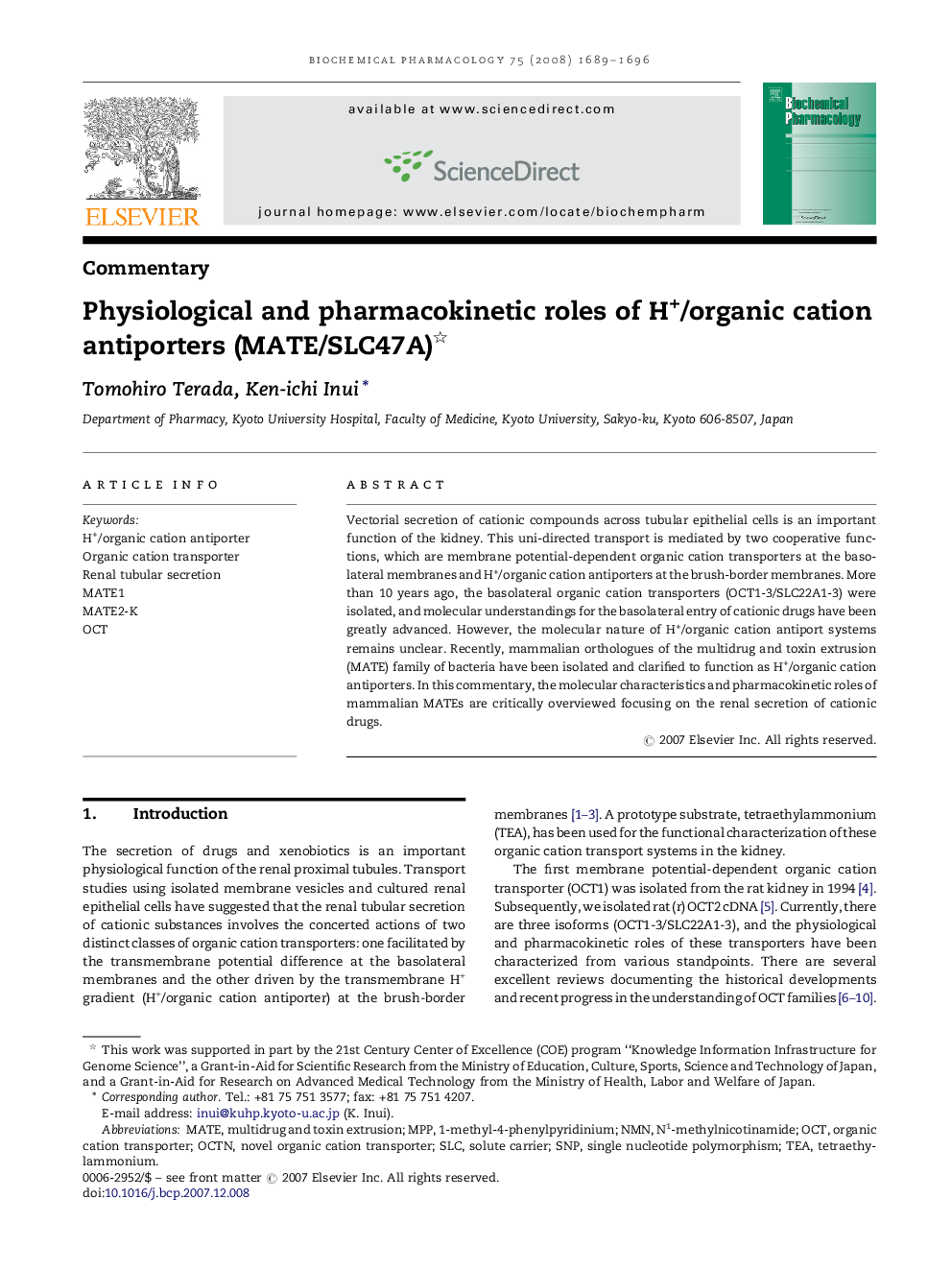| Article ID | Journal | Published Year | Pages | File Type |
|---|---|---|---|---|
| 2515291 | Biochemical Pharmacology | 2008 | 8 Pages |
Vectorial secretion of cationic compounds across tubular epithelial cells is an important function of the kidney. This uni-directed transport is mediated by two cooperative functions, which are membrane potential-dependent organic cation transporters at the basolateral membranes and H+/organic cation antiporters at the brush-border membranes. More than 10 years ago, the basolateral organic cation transporters (OCT1-3/SLC22A1-3) were isolated, and molecular understandings for the basolateral entry of cationic drugs have been greatly advanced. However, the molecular nature of H+/organic cation antiport systems remains unclear. Recently, mammalian orthologues of the multidrug and toxin extrusion (MATE) family of bacteria have been isolated and clarified to function as H+/organic cation antiporters. In this commentary, the molecular characteristics and pharmacokinetic roles of mammalian MATEs are critically overviewed focusing on the renal secretion of cationic drugs.
